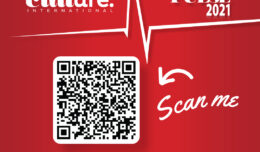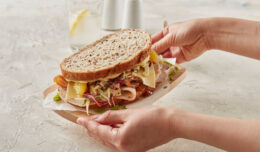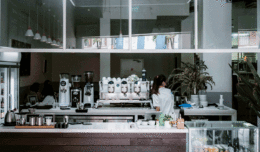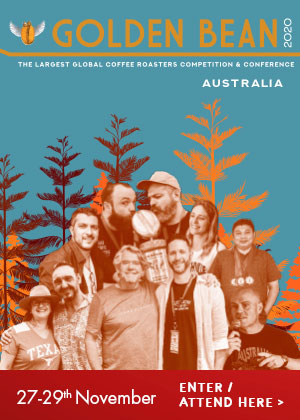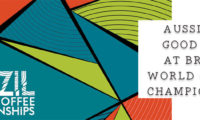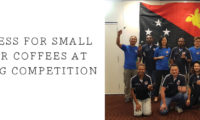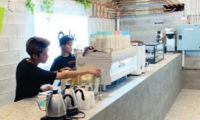[nggallery id=34]
25 years of married life is a great excuse to celebrate with an overseas holiday and to renew our wedding vows … in Spanish. The family choice at that moment was Chile and Argentina in South America, in conjunction with an invitation from friends who originated from Santiago, also planning to celebrate their twenty years of marital bliss.
Darren’s Story
Café con Piernes
Despite being in South America, where so much of the world’s coffee beans are grown, it is fair to say that Chile does not rate highly when it comes to the quality of coffee sold in its cafés. Most Chileans would prefer a Nescafe. In fact, if you order a coffee in a hotel in Chile, you are likely to get an instant coffee … most of the milk being UHT doesn’t really help either. Unlike Brazil and Colombia, coffee has never been a traditional hot drink in Chile. It has really only been in the last few decades that coffee has gained any sort of popularity. Tea has always been the hot drink of choice for most Chilenos.
An interesting aspect of the Chilean café scene in the capital Santiago are what are known as Café con Piernes, which literally translates from Spanish as Coffee with Legs. These cafés are called Coffee with Legs, as the waitresses work on raised platforms behind the bar and wear very short skirts for the clientele to have a (for the want of a better word) perve. There are banks of espresso machines where the waitress will take your order to the (almost always male) barista to make your drink of choice.
The most famous Café con Piernes in Santiago are Café Caribe and Café Haiti. Despite the above description, they are not really sleazy. They are quite well decorated and somewhat elegant and serve a mixed clientele of men and women – although, to be completely honest, there are probably nine men for every one woman. The men in these cafés are generally in their fifties and older, wear suits and seem to spend more time reading the paper than looking at the waitresses. These are not in side alleys or back streets, but stand proudly in Paseo Ahumada – the main pedestrian walkway of Santiago – the Santiago Pitt St or Bourke St Malls of Sydney and Melbourne. In these cafés you can only buy hot drinks, be it café con leche, cappuccino, espresso or a hot chocolate. No food or alcohol is served in any Café con Piernes.
Now for a little history on this quirky Santiago institution. Fifty years ago, the downtown of Santiago was the main business hub of the city, where mostly men worked in the surrounding offices. Needing some caffeine and harmless entertainment before heading home to their traditional wives and families, they would visit Italian-style coffee bars. Since the concept didn’t fly at first, the genius owner of Haiti had the idea to use lovely barmaids to serve the steaming beverages. This time the concept stuck, and his business soared. As the men poured through the doors, competitors rushed to get a piece of the action by opening their own cafés. Thus was born Café con Piernes, a quirky and particularly Santiago institution.
There are many other Café con Piernes in Santiago, but Caribe and Haiti are the most famous. There are some sleazy places on side streets, but these don’t seem to be surviving like the venerable institutions aforementioned. Café con Piernes are as ubiquitous in downtown Santiago as Starbucks is throughout so many cities in the world. But unlike Starbucks, these are a true Chilean institution. If you are in Santiago, be sure to visit one to get a nice glimpse of Chileno kitsch.
Back to Sean
I soon worked out the coffee was not a major source of enjoyment for the Chilean population; which is quite odd, considering their European lifestyle, climate and close proximity to some of the world’s best coffees in Columbia, Brazil and Peru. It was a bit like stepping back to the seventies, where instant coffee pushed out the small roaster from existence. The favourite café beverage for locals was a strange concoction of fermented wheat, caramel and a whole apricot, which you sort of ate and drank at the same time. This sweet wheat drink, called Mote Con Huesillo, is served cold and is a summer drink.
I was starting to struggle with my lack of good caffeine intake and refused to do instant. I packed 4 kilos of coffee to give away, but greedily hid the supply for the duration of my trip. I even struggled to buy a coffee grinder and a plunger in the department stores, until I found a kitchen shop that had one of each on a dusty shelf.
I surfed the net looking for a coffee joint that could help out my quest, and the same café name kept coming up, which was Melbourne Café in a neighbouring port city, two hours away in Valparaiso. We were heading to the coast and decided to pay a visit and find out a bit about this café venture.
I was greeted in Café Melbourne by the friendly owner, Daniel Fellhandler, who had lived in Sydney as a student and a Chilean wine salesperson. When Daniel decided to go back to his hometown of Valparaiso and start a business, he had observed the growth of the Australian espresso bar culture and knew this would be his future direction. Daniel decided on the Café Melbourne name, as it was a direct relationship to his happy caffeinated timed in Australia.
The café had a real Australian feel and was getting good patronage from local financial office workers in this city precinct. Fresh milk is a challenge in Chile and can only be found in certain locations. UHT milk only was available, and it didn’t complement milk based coffees well. Daniel also struggled with other café supplies and still brings in coffee bits and pieces from Australia and the USA.
He is planning to grow the business once he gets the local endorsement and support for this style of business operation and gets over the strict local government business regulations.
One business that is booming in Chile is the Domino hot dog chain. This sixty-year old hospitality business is an icon in Santiago, with its group of well dressed old men singing out orders across the room of crowded patrons for delicious completos. A completos is a tasty salted, boiled sausage on a fresh bun with a simple salsa of tomato, onion and coriander topped with a creamy mayonnaise. The old blokes also do great Churrascos (meat sangas) accompanied by a fresh juice or a beer.
Yes, for all the romantics out there we did complete our wedding vows – but not until after a few hidden surprises, like having to dress up like a Waso Chilean Cowboy and do a courting dance called the la Queca. The ceremony ended up with 100 newfound friends and went until early in the morning hours.
Just to top off our great wedding experience, we had a first hand experience with a 6.5R earthquake, which shook scarily for a minute and a half. Thankfully, no one was injured by this shake – that the locals were oblivious to. The nicest thing, apart from the amazing landscape, were the Chilean people, who treated us as if we were part of their family. We will be back. Chao!











